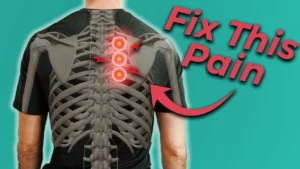Swollen legs can be uncomfortable, painful, and even alarming. Whether it’s due to poor circulation, an injury, pregnancy, or a medical condition like lymphedema, swelling in the legs (also known as edema) is a common issue that many people face. The good news? There are simple, effective ways to reduce swelling and improve leg stiffness.
In this blog post, we’ll explore 7 proven tips to help you find relief and get back on your feet. From elevating your legs to using compression socks, these remedies are easy to implement and can make a big difference. Let’s dive in!
What Causes Swollen Legs?
Before we get into the solutions, it’s important to understand what causes swollen legs. Some common reasons include:
- Poor circulation: Sitting or standing for long periods can cause fluid to pool in your legs.
- Injury: Sprains, fractures, or muscle strains can lead to swelling.
- Pregnancy: Hormonal changes and increased pressure on blood vessels can cause fluid retention.
- Medical conditions: Conditions like lymphedema, heart disease, or kidney problems can contribute to swelling.
- Lifestyle factors: High salt intake, dehydration, or lack of physical activity can worsen swelling.
If your swelling is severe, persistent, or accompanied by pain, redness, or warmth, it’s important to consult a doctor. It could be a sign of a more serious condition like a blood clot.
7 Tips to Reduce Swelling and Stiffen Your Legs
1. Elevate Your Legs
One of the simplest and most effective ways to reduce swelling is to elevate your legs above heart level. This helps improve circulation and allows fluid to drain away from your legs.
- How to do it: Lie down and prop your legs up on pillows or a footrest for 15-20 minutes.
- Tip: Try elevating your legs several times a day, especially after long periods of sitting or standing.
2. Use Compression Socks
Compression socks are designed to apply gentle pressure to your legs, helping to improve blood flow and reduce swelling.
- How to use them: Wear compression socks during the day, especially if you’re on your feet for long periods.
- Tip: Choose the right level of compression for your needs—your doctor or pharmacist can help you decide.
3. Apply Cold Compresses
Cold therapy can help reduce inflammation and numb pain, making it a great option for swollen legs.
- How to do it: Wrap an ice pack or a bag of frozen peas in a towel and apply it to the swollen area for 10-15 minutes.
- Tip: Repeat this process several times a day, but avoid applying ice directly to your skin.
4. Stay Active
Gentle exercise can improve circulation and reduce stiffness in your legs.
- What to try: Go for a short walk, do leg stretches, or try yoga poses that promote blood flow.
- Tip: Avoid sitting or standing in one position for too long—take breaks to move around.
5. Massage Your Legs
Massaging your legs can help promote fluid drainage and reduce swelling.
- How to do it: Use gentle, upward strokes to massage your legs toward your heart. You can use a moisturizer or essential oils for added relaxation.
- Tip: Consider seeing a professional massage therapist for a lymphatic drainage massage.
6. Stay Hydrated and Reduce Salt Intake
Dehydration and high salt intake can worsen swelling by causing your body to retain fluid.
- What to do: Drink plenty of water throughout the day and limit your intake of salty foods.
- Tip: Add lemon or cucumber to your water for a refreshing twist.
7. Consult a Doctor
If your swelling persists or is accompanied by other symptoms like pain, redness, or warmth, it’s important to seek medical advice.
- Why: Persistent swelling could be a sign of a more serious condition, such as a blood clot or heart problem.
- Tip: Keep track of your symptoms and share them with your doctor for a proper diagnosis.
When to Seek Medical Help
While these tips can help reduce mild to moderate swelling, it’s important to consult a doctor if:
- The swelling is sudden or severe.
- You experience pain, redness, or warmth in the affected area.
- The swelling is only in one leg (this could indicate a blood clot).
- You have other symptoms like shortness of breath or chest pain.
Conclusion
Swollen legs don’t have to keep you from living your best life. By following these 7 proven tips, you can reduce swelling, improve circulation, and stiffen your legs for better comfort and mobility. Remember, consistency is key—try incorporating these remedies into your daily routine for the best results.
If you found this post helpful, don’t forget to save it for later and share it with someone who might need it! For more health and wellness tips, explore our blog or follow us on Pinterest.
Call-to-Action
Have you tried any of these tips for swollen legs? Let us know in the comments below! And if you’re looking for more health and wellness advice, check out our other blog posts or follow us on social media.


